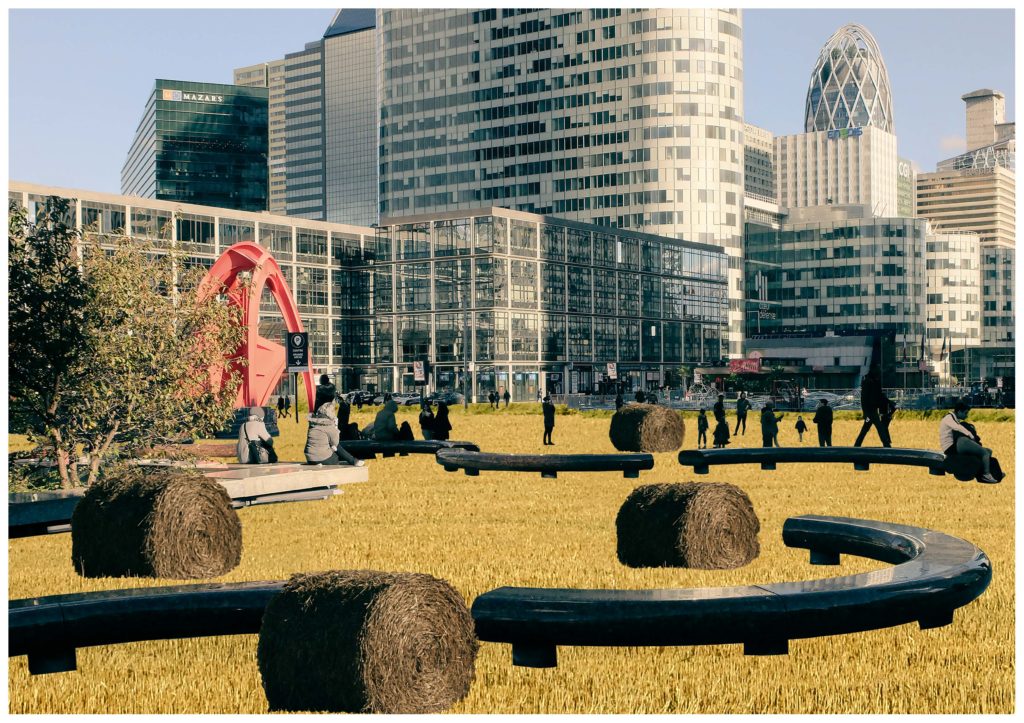The past decades gave birth to an urban way of life dominated by uncertainty and complexity. Those who do not have the means to adapt to an ever-evolving socio-economic environment are more vulnerable. And it can be fairly assumed that the number of people who will face difficulties will grow: according to the United Nations (1), more than half of the world’s population lives in cities and the trend should not reverse. If assessing the role of urban farming as a mean to improve resilience is regularly discussed, its physical integration within the urban frame is also worth to consider. Though food security, as such, remains questionable (2), rooftop gardens, vertical greenhouses or indoor farms, are expected to offer more opportunities in terms of sustainable environment and social cohesion improvement. An interesting example is provided by a detailed study on the role played by NYC Latino community gardens showing their contribution in enhancing the community cohesion (3). But what would then be the consequences on the urban landscape? Will urban farming be confined to greening building roofs or is a broader dimension linking rurality to urbanity conceivable?
Beyond questions related to sustainability, local food supply or climate change regulations, an in-depth review on the dichotomy between “rural” and “urban” is worth to evaluate. Sociologists S. Tappert & Al. (4), showed how different cities in Switzerland, aiming at efficiency, implemented strategies to reorganize and rationalize the space. But at the same time, urban gardens were closed and displaced to locations having less significance for urban development planners. This rupture in the continuum between urbanity and rurality seems to be fully contradictory with a new way of living the city that does not correspond to such binary exclusion. Opposing the two concepts is seen by many sociologists as a way to reinforce a stereotype relying on an obsolete and oversimplified relationship between spaces and individuals.
Questioning the dialectic between the urban and the rural is not new. In the 1920s, Franck Lloyd Wright introduced “Broadacre city” (5), a new urban model acknowledging the idea that a city is a process and not an arrangement of structural elements. Considered by many as utopian, “Broadacre city” proposed a new way of urban life with urbanity and rurality intertwined and aiming to improve democracy. Nowadays, while rural areas are more and more “urbanized”, and cities “ruralized”, the interaction between both concepts enable to create new paradigms, encouraging new forms of urbanism and ultimately improving urban resilience. Splitting our living space between “urbanity” and “rurality” needs to be reconsidered according to resident’s social environment more than on the ground of pre-conceived architectural blueprints.
The development of urban farming is still in its infancy. But there are fair reasons to believe that it is on a positive trend and will pursue its development. With current socio-economic models challenged by a population with diverse cultural capitals, the risk of disruption is not negligible. When conditions for a cohesive social development are met, urban farming could find its roots. But its growth will depend on its integration level in the city life. Obviously, financial operations speculating on land prices will not help as shown by greening strategies displacing minorities (6). Urban citizens should rise up against such plans.
Reaching the right balance to improve our wellbeing and well-living is still a long way. As recalled by Ritchot & Al, and emphasized with the below work, cities’ growth is always linked to new social projects that need to be consistent with their urban space reorganization (7).
The below work questions the way “rurality” could become integrated into “urbanity”, enabling to rebalance the exclusions derived from a “selective green-washing” urbanism. The urban environment is massive, almost oppressive and challenges the contribution of rural developments.

(1) https://esa.un.org/unpd/wup/publications/files/wup2014-highlights.pdf
(2) https://doi.org/10.7287/peerj.preprints.2286v1
(3) https://link.springer.com/article/10.1007/s10460-003-1248-9
(4) https://doi.org/10.1016/j.landurbplan.2017.08.016
(5) https://franklloydwright.org/revisiting-frank-lloyd-wrights-vision-broadacre-city/
(7) https://www.erudit.org/fr/revues/cgq/1994-v38-n105-cgq2677/022451ar/